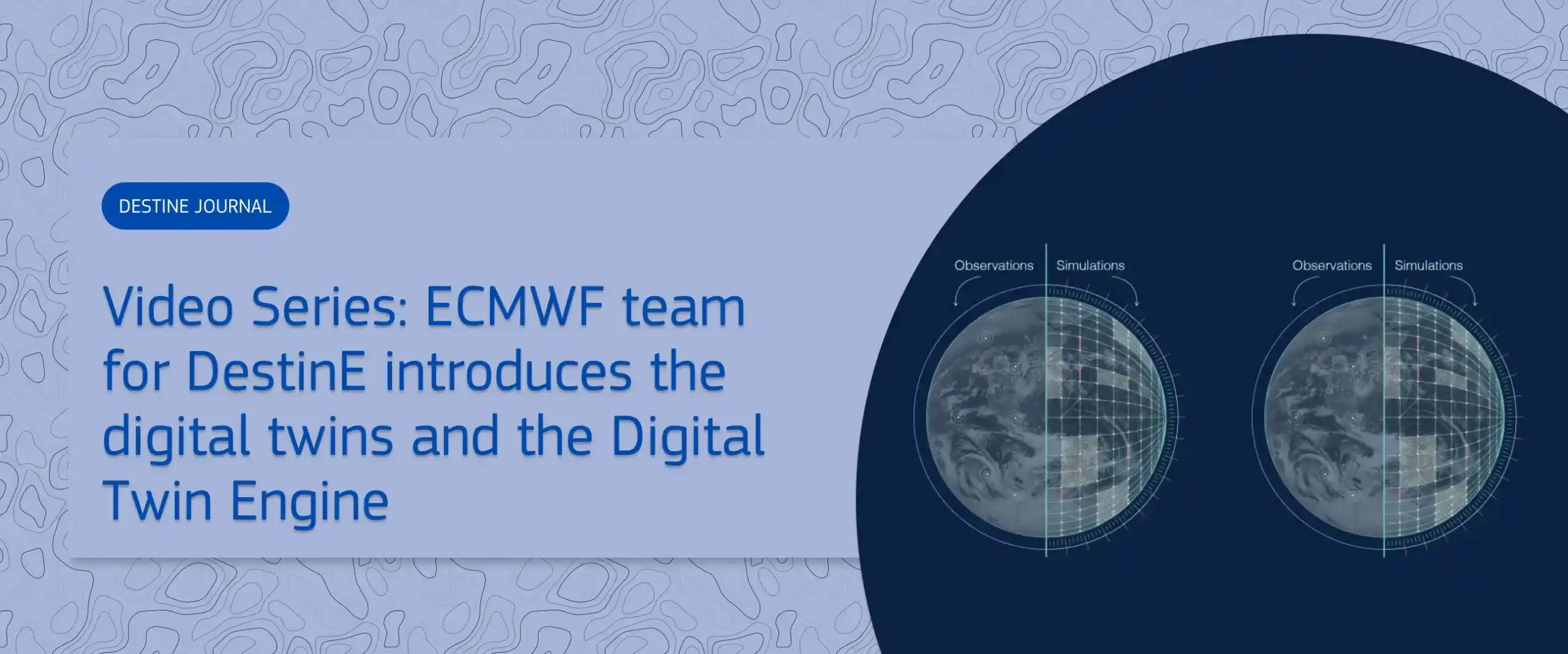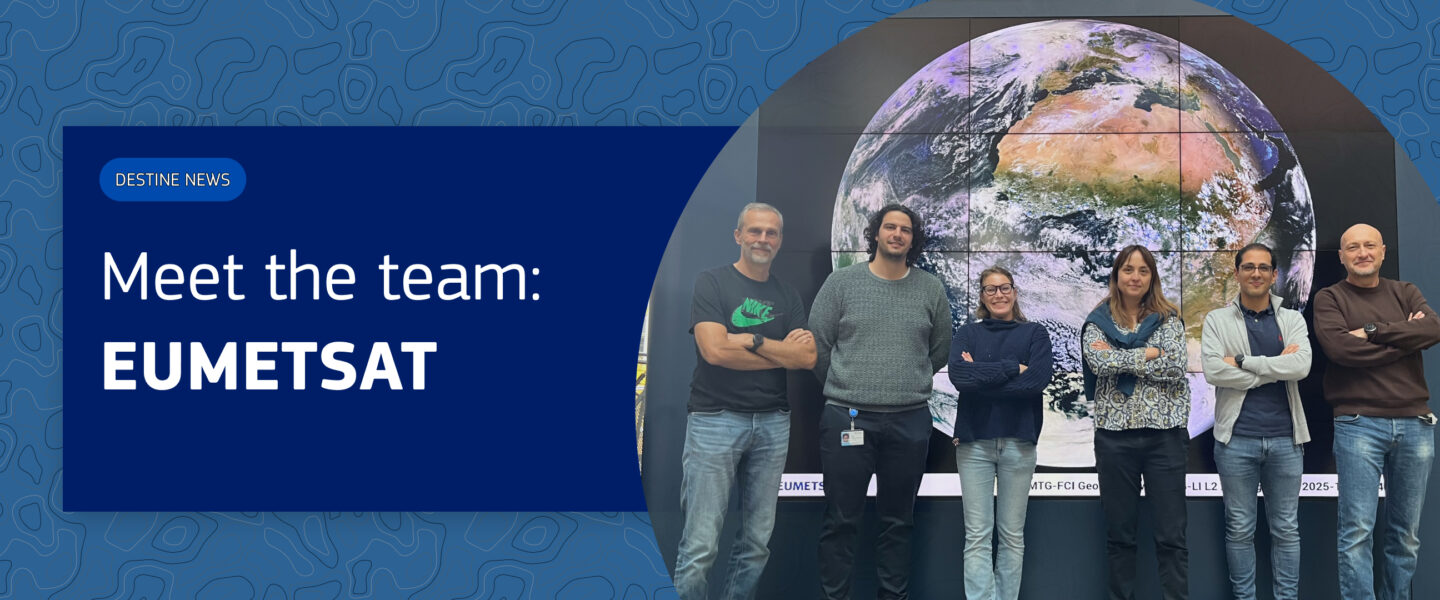Video Series: ECMWF team for DestinE introduces the digital twins and the Digital Twin Engine

The ECMWFEuropean Centre for Medium-Range Weather Forecasts More DestinE “video capsules” features a series of interactive interviews presenting the different
roles and the key elements ECMWFEuropean Centre for Medium-Range Weather Forecasts More is entrusted to deliver in the initiative, in collaboration with many
partners across Europe. ECMWFEuropean Centre for Medium-Range Weather Forecasts More is in charge of delivering the first two high-priority digital twins, on
Weather-induced Extremes and Climate Change Adaptation and the Digital Twin Engine, the software
environment allowing the complex operations of DestinE’s digital twins in some of the largest
supercomputers in Europe, thanks to the special access granted by EuroHPC Joint Undertaking.
ECMWFEuropean Centre for Medium-Range Weather Forecasts More staff describe many other aspects of their work. For more videos visit the ECMWFEuropean Centre for Medium-Range Weather Forecasts More DestinE Multimedia page.
Watch the videos:
Irina Sandu, ECMWFEuropean Centre for Medium-Range Weather Forecasts More Director of Destinaton Earth explains the role of ECMWFEuropean Centre for Medium-Range Weather Forecasts More in DestinE and gives insights about the initiative and the digital twins on Weather-induced Extremes and Climate Change adaptation as well as the Digital Twin Engine, the software environment needed to power the digital twins.
ECMWFEuropean Centre for Medium-Range Weather Forecasts More Scientist Sebastian Milinski tells us more about “The Digital Twin on Climate Adaptation”, that will produce multi-decadal simulations of the past and future climate, at high resolutions and from global to regional and national levels.
ECMWFEuropean Centre for Medium-Range Weather Forecasts More Scientist Benoit Vanniere introduces “the Weather-Induced Extremes Digital Twin” and in particular the global component, forecasting the weather a few days ahead, at very high resolution and at the global scale, including information at local scales for the sectors most exposed to weather extremes.
ECMWFEuropean Centre for Medium-Range Weather Forecasts More scientist Mariana Clare highlights the key “role of Machine LearningField of statistical research focused on training computatio More in DestinE”. For example, using a probabilistic neural network will provide the uncertainty information necessary to the forecast avoiding costly computing operations.

